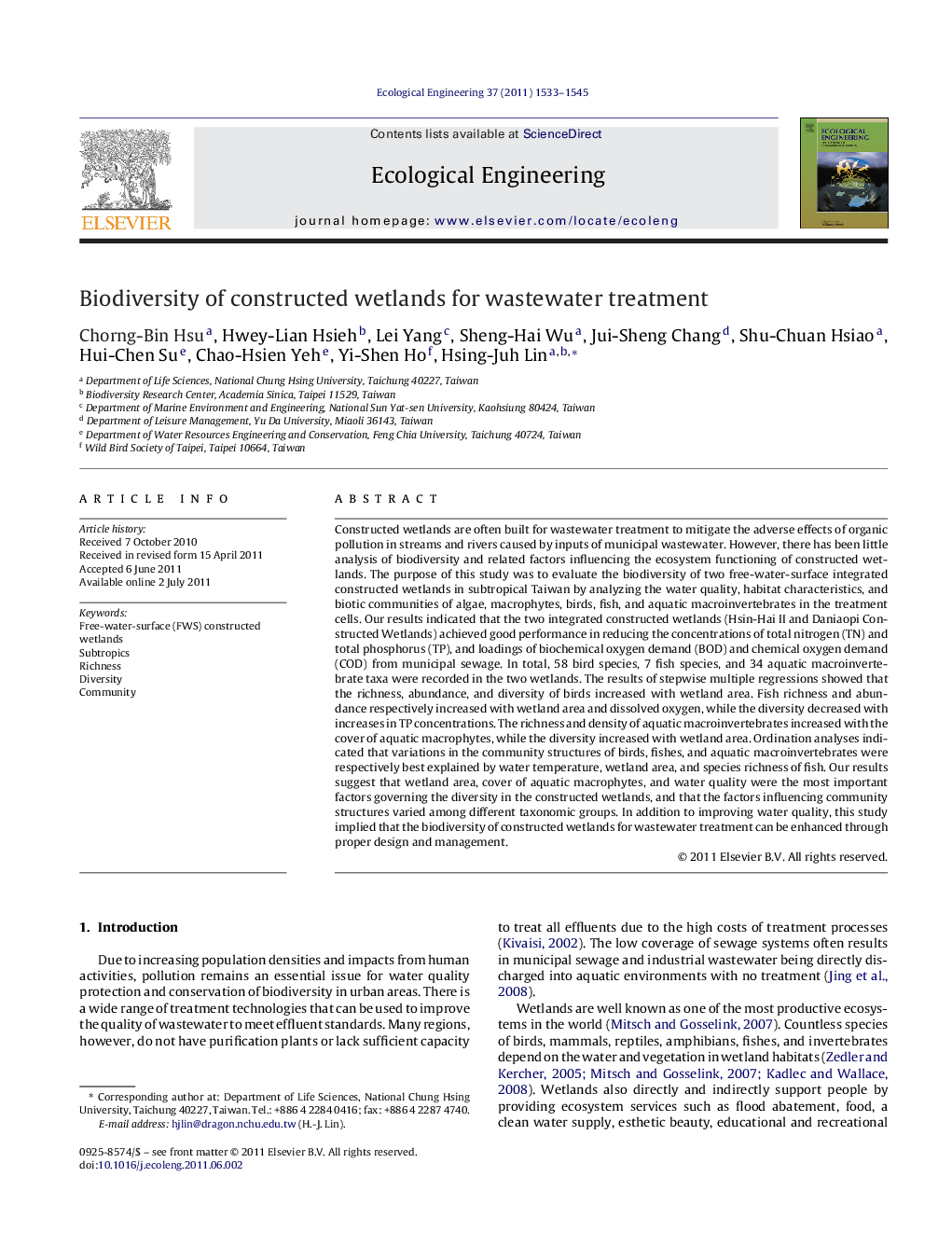| کد مقاله | کد نشریه | سال انتشار | مقاله انگلیسی | نسخه تمام متن |
|---|---|---|---|---|
| 4390275 | 1305164 | 2011 | 13 صفحه PDF | دانلود رایگان |

Constructed wetlands are often built for wastewater treatment to mitigate the adverse effects of organic pollution in streams and rivers caused by inputs of municipal wastewater. However, there has been little analysis of biodiversity and related factors influencing the ecosystem functioning of constructed wetlands. The purpose of this study was to evaluate the biodiversity of two free-water-surface integrated constructed wetlands in subtropical Taiwan by analyzing the water quality, habitat characteristics, and biotic communities of algae, macrophytes, birds, fish, and aquatic macroinvertebrates in the treatment cells. Our results indicated that the two integrated constructed wetlands (Hsin-Hai II and Daniaopi Constructed Wetlands) achieved good performance in reducing the concentrations of total nitrogen (TN) and total phosphorus (TP), and loadings of biochemical oxygen demand (BOD) and chemical oxygen demand (COD) from municipal sewage. In total, 58 bird species, 7 fish species, and 34 aquatic macroinvertebrate taxa were recorded in the two wetlands. The results of stepwise multiple regressions showed that the richness, abundance, and diversity of birds increased with wetland area. Fish richness and abundance respectively increased with wetland area and dissolved oxygen, while the diversity decreased with increases in TP concentrations. The richness and density of aquatic macroinvertebrates increased with the cover of aquatic macrophytes, while the diversity increased with wetland area. Ordination analyses indicated that variations in the community structures of birds, fishes, and aquatic macroinvertebrates were respectively best explained by water temperature, wetland area, and species richness of fish. Our results suggest that wetland area, cover of aquatic macrophytes, and water quality were the most important factors governing the diversity in the constructed wetlands, and that the factors influencing community structures varied among different taxonomic groups. In addition to improving water quality, this study implied that the biodiversity of constructed wetlands for wastewater treatment can be enhanced through proper design and management.
Journal: Ecological Engineering - Volume 37, Issue 10, October 2011, Pages 1533–1545